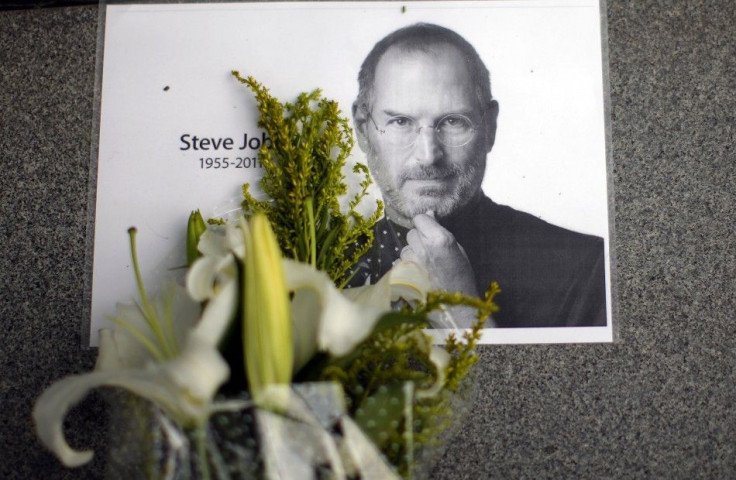Steve Jobs Dead: 9 Little-Known Facts About the Apple Wizard

On Wednesday night, apple.com opened with Steve Jobs' black-and-white picture, along with his name and years of birth and death. Yes, the tech wizard and master of sleek gadgets is no more. Jobs, who was diagnosed with a rare form of pancreatic cancer in 2004 and underwent a liver transplant two years ago, died Wednesday at the age of 56.
Here is Apple's tribute:
Apple has lost a visionary and creative genius, and the world has lost an amazing human being. Those of us who have been fortunate enough to know and work with Steve have lost a dear friend and an inspiring mentor. Steve leaves behind a company that only he could have built, and his spirit will forever be the foundation of Apple.
Below are some of the interesting facets of Steve Jobs' life that very few of his admirers know.
The Reality Distortion Field
It was Apple's engineer Burrell Smith who coined the term Reality Distortion Field. The reason behind the term was to explain Jobs' charismatic nature and his ability to convince his listeners. Smith used the term in the context of working with Jobs, but it is now extensively used to portray his charming personality, in general, especially on stage.
According to former Apple employee Mike Evangelist, Jobs' keynote addresses were extremely well prepared months in advance. They were a proper blending of delicate humor, suspense and exact timing.
What really gets you is the way he talks. There's something about the rhythm of his speech and the incredible enthusiasm he conveys for whatever it is he's talking about that is just infectious, said journalist Alan Deutschman.
We, Not I
Another significant thing about Jobs' public performance and interviews was his use of the pronoun we. Almost every time Jobs spoke, he never said I, but he means I using a We. During an interview at D5, Walt Mossberg curiously asked him, who's 'we'? Jobs replied, Well, ME! His biological sister Mona Simpson wrote in her novel about her brother that this habit of Jobs was true in private conversation also.
A Devout Vegan
Jobs had been a dedicated vegan ever since his teenage years. At the age of 19, in Reed College, Jobs explored strange diets which, according to him, would let him get rid of all mucus and hence the need to shower. At one point of time, Jobs started eating only fruits. He also started a habit of fasting that he kept for a long time. One of his favorite foods was known to be raw carrot.
He Made People Cry
A title of one of the press articles written about Jobs' difficult character was The Trouble with Steve Jobs. According to Robert Sutton, Stanford management science professor and author of best-seller The No Asshole Rule, The degree to which people in Silicon Valley are afraid of Jobs is unbelievable. He made people feel terrible; he made people cry.
It was during his early years at Apple that Jobs earned this reputation. In 1981, Macintosh project founder Jef Raskin complained to then-Apple president Mike Scott about Jobs' temper. There are a number of occasions of Jobs getting angry at employees and firing them for trivial reasons.
The Inspiration for Many Got Inspired by Many
Jobs is undoubtedly a source of inspiration for many people who dream and want to experience their dreams. But the gadget wizard himself got inspired by a few people and father figures. He always praised folk singer Bob Dylan. He played his music and sang his songs all day in his youth.
Another inspiration was Kobun Chino Otogowa, NeXT's official spiritual adviser. In 1970s, he was Jobs' zen guru from the Los Altos Zen Center. Otogowa was the one credited for convincing Jobs to start Apple rather than becoming a Zen vicar.
Other names that served as sources of inspiration for Jobs included American photographer Ansel Adams, Sony co-founder Akio Morita, inventor/entrepreneur, Thomas Edison, American industrialist Henry Ford, and the founder of Atari and Jobs' first (and only) employer, Nolan Bushnell.
He Thought of Becoming a Monk
In his youth, Jobs studied Zen Buddhism. He used to say that he wanted to become a monk in a monastery in Japan instead of starting Apple. But his guru Kobun Chino Otogowa later made him think otherwise.
He Thought of Running for California Governor
Using his wife's name, Jobs funded the Democratic Party for each election. After he left Apple in 1985, he thought of running for the office of governor of California. However, he later gave up the decision.
Photography
Jobs loved photography. For a long time, he decorated his home only with big black-and-white photographs of cultural icons like Einstein, or the California landscape, mostly taken by Ansel Adams. He also put Adams prints in his NeXT office.
The Apple Museum
The Apple Museum in the Stanford University contains the famed collection of Apple memorabilia that Jobs donated after he came back to Apple. The museum includes exclusive documents and pictures from Apple's first 20 years (1976-1996).
Watch the video below:
[Source: allaboutstevejobs.com/Romain Moisescot]
Must Read: Steve Jobs (1955-2011) Dead: How Cancer Took Toll on Jobs Health Throughout the Years (PHOTOS)
Must Read: Steve Jobs: Top 10 Achievements of the World's Greatest Tech Icon (PHOTOS)
© Copyright IBTimes 2024. All rights reserved.












